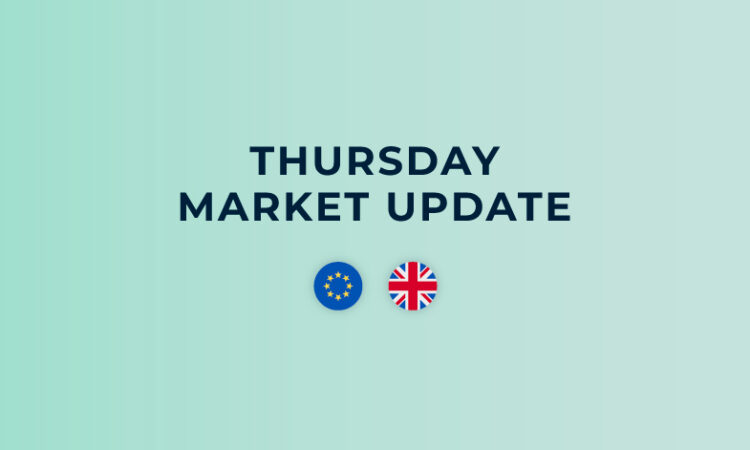
Written by Convera’s Market Insights team
Calibrating intervention risks
George Vessey – Lead FX Strategist
The Japanese yen, which accounts for almost 14% of the US dollar index, remains in the limelight. USD/JPY broke above ¥160 yesterday, hitting its highest level since 1986 and raising intervention alarm bells. The last time that level was briefly breached back in late April, the Bank of Japan (BoJ) likely intervened and USD/JPY finished the day 1.3% lower, but this time could be different.
The risk of intervention is lower because the JPY depreciation has been more controlled this time round and overall FX volatility more subdued. One-week realised volatility in USD/JPY stands around 4.50%, way below the levels seen when Japanese officials usually step in. Nevertheless, Japan’s currency chief Masato Kanda stated yesterday that authorities are watching markets with a high level of urgency, and that they will take appropriate steps as needed. But even if the BoJ were to sell dollars, any pullback in the currency pair might be much shallower than previous ones as evidenced by options market pricing, which shows one-week risk reversals at their least bearish for the USD in three months, suggesting there’s no rush for now to hedge against an intervention-fueled drop.
So far in June, the yen has lost about 1.5% against the dollar, extending the year-to-date loss to about 13%, pressured by the monetary policy divergence between the BoJ and the Federal Reserve. The dollar index edged up to 105.8 on Wednesday, a high level not seen in about two months, as traders assess the monetary outlook while digesting comments from Fed officials and awaiting the key PCE inflation on Friday.

Mixed data complicates BoE outlook
George Vessey – Lead FX Strategist
The pound has firmed across the board this morning as data from Indeed showed British companies lifted wages at the fastest pace since January in postings for jobs they have open. This is yet another factor that might complicate the case for an interest-rate cut by the Bank of England (BoE) in August.
Advertised pay on the Indeed jobs search site rose by 6.5% in the year to May, and although part of that was due to a 9.8% jump in the minimum wage in April, it also reflects worker shortages since the pandemic. The figures provide a more up-to-date snapshot of trends in the labour market, which the BoE is watching carefully for signs of upward pressure on prices. Policy makers have said wage growth remains too fast to be compatible with the UK’s 2% inflation target, an issue that may force borrowing costs to remain at a 16-year high for a little longer. Money markets are still pricing a 15 basis points of easing in August, equivalent to a 60% probability, but although today’s data and sticky core and services inflation figures complicate matters, we think the BoE is more likely to cut then. The UK election will be over, economic activity is losing momentum and consumer spending is softening – as evidenced by the weaker-than-expected monthly retail sales balance from the Confederation of British Industry (CBI) yesterday.
For now, in this low volatility environment, the pound remains an appealing currency given its high yield advantage, particularly against the likes of the EUR, JPY and CHF. In terms of GBP/USD, the pair remains afloat $1.26, but has broken below its 50- and 100-day moving averages in a sign of potentially more downside brewing.

Risk off mood keeps a lid on euro recovery
Ruta Prieskienyte – Lead FX Strategist
The euro weakened to a near two-month low at $1.0687 after the ECB Governing Council member Rehn hinted at a bias towards additional easing this year. Souring risk sentiment saw European equities decline and European government bond yield curves edge higher, in line with the global trends. The OAT-Bund spread ticked higher to 76.8bps, applying further pressure to the common currency.
The euro was already under pressure early in the Wednesday trading sessions as the latest survey showed an unexpected fall in the German consumer morale for the first time in five months. The GfK Consumer Climate Indicator fell to -21.8 heading into July, down from the previous reading of -21.0, sharply missing the market consensus of -18.9. Both income expectations and economic prospects were notably lower. Consequentially, the tendency to save surged while the propensity to buy remained depressed. The report marks the third survey this month coming short of expectations, suggesting that the path towards recovery will be rocky. Despite the headwinds, we continue to expect the German economy to escape stagflationary conditions in the second half of the year.
Across the FX market, the Japanese yen weakened to a record level of 171.60 against the euro, fuelling fresh concerns about further potential intervention by Japanese authorities seeking to bolster its struggling currency exchange rate. Today’s US jobless claims number and the US presidential debate could move markets in the run-up to Friday’s PCE report as well as the French election vote on Sunday. Going into the final stretch of the week, EUR/USD is trading at the bottom of the 1-month trading range. With short-term risks skewed to the downside, persistent euro weakness could see EUR/USD test the April lows around $1.0620.

Yen hit multi-year lows versus peers
Table: 7-day currency trends and trading ranges

Key global risk events
Calendar: June 24-28

Have a question? [email protected]
*The FX rates published are provided by Convera’s Market Insights team for research purposes only. The rates have a unique source and may not align to any live exchange rates quoted on other sites. They are not an indication of actual buy/sell rates, or a financial offer.

